
What is Multiple Intelligence?
The theory of multiple intelligences was developed in 1983 by Dr. Howard Gardner, professor of education at Harvard University. It suggests that the traditional notion of intelligence, based on I.Q. testing, is far too limited. Our schools and culture focus mostly on linguistic and logical-mathematical intelligence leaving behind inherent talents in early childhood (such as a love for art, music, dance, or drama). For over 30 years Madeleine Kando taught dance, movement, and drama to pre-school, elementary and special needs children. To make her teaching more fun and effective she incorporated Howard Gardner’s theory of multiple intelligence in her teaching program.
To reach a broader range of human potential in teaching Madeleine Kando uses the following six different types of intelligence.
- Physical (“body smart”)
- Musical (“music smart”)
- Visual (“picture smart”)
- Verbal (“word smart”)
- Logical (“number/reasoning smart”)
- Social (“people smart”)
Next, we explain what each of the 6 types of intelligence is.
1. Body Smart – Physical Intelligence
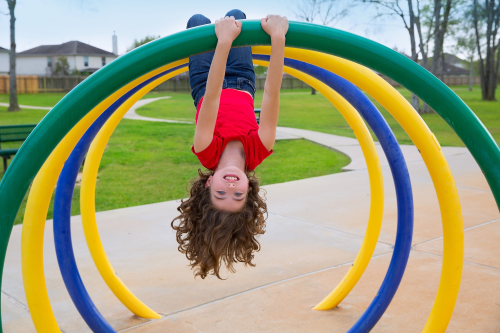
Physical Learning Style
Body smart children love to move. They like to make crafts, work with clay and finger paint. They have specific physical skills such as coordination, balance, dexterity, strength, and flexibility. They tend to be active and athletic and often like working with their hands, taking things apart, and put them back together.
How They Learn: Children who are body smart learn best by doing activities that involve movement, such as dance, crafts, sports, acting, and manipulating objects. They enjoy role-playing, simulations, and thrive in “hands-on” learning environments.
Sample Exercise for Geometry
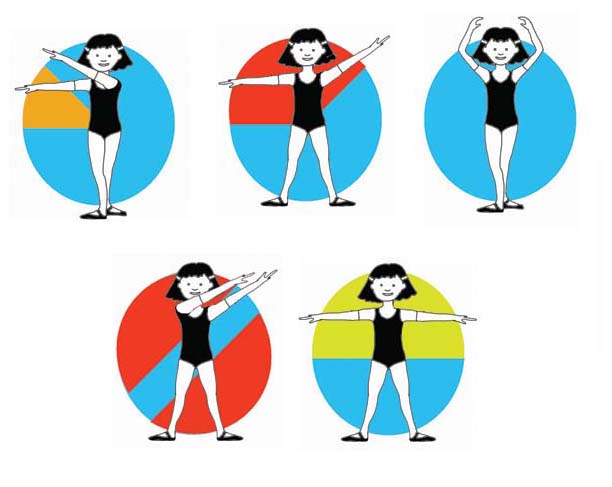
Children move freely around the room. When the music stops, they freeze into a ‘geometric shape’.
1. acute angle.
2. obtuse angle.
3. circle
4. parallel lines
5. perpendicular lines.
Once the basic geometric shapes are mastered the children also try to pair up with their geometric ‘shadow’.
2. Music Smart – Auditory Intelligence
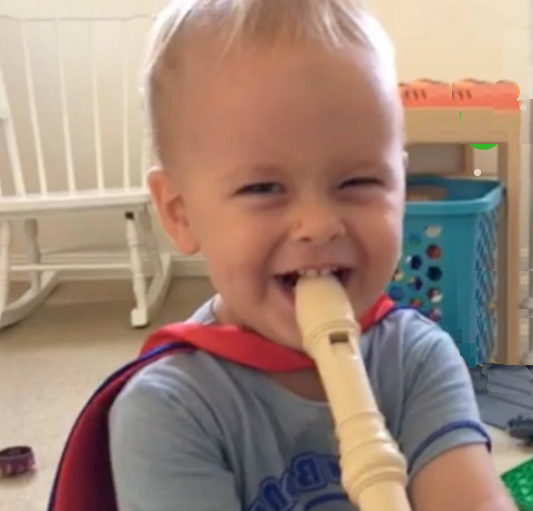
Musical Learning Style
Children who are music smart learn best through hearing things. They like to read to themselves out loud. They are not afraid to speak in class, are good at explaining and remember names. They follow spoken directions well. They cannot keep quiet for long periods and enjoy acting, being on stage. They enjoy creating and listening to music and tend to think in sounds, rhythms, and patterns. Many of these learners are extremely sensitive to environmental sounds. They often enjoy singing and whistling.
How They Learn: Children who are music smart learn best through hearing the information. They often need to read the written word aloud to help them remember key points. Verbal repetition is an effective means of study for auditory learners.
3. Picture Smart – Visual
Intelligence
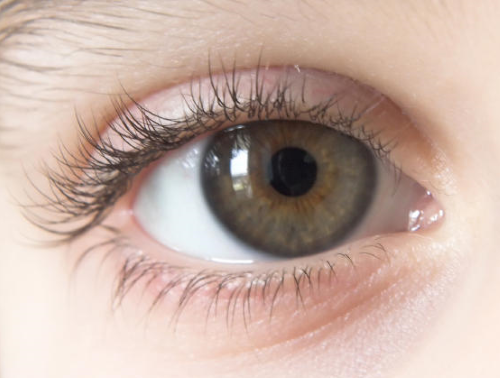
Visual Learning Style
Children who are picture smart think in pictures and colors more than words and need to create vivid mental images to remember and understand information. They like maps, charts, pictures, videos, and movies, so teaching with film may be helpful in their case.. They’re usually good at puzzles, have a strong sense of direction, and like making and repairing things. Visual/Spatial learners can become navigators, sculptors, inventors, architects, and interior designers, mechanics, or engineers.
How They Learn: Children who are picture smart learn best by seeing what they are being taught. They will find that if they include images, mind maps, lists, and other visual techniques in their notes then they will have a better chance of remembering key information.
Sample Exercise for Learning Language Visually
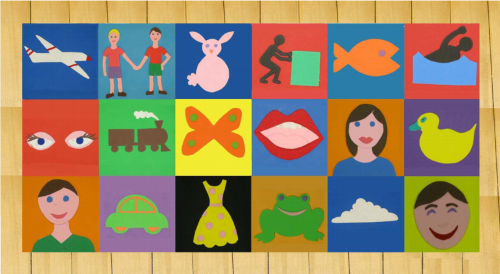
Jumping Mat
The jumping mat is for teaching language, dexterity, and right/left recognition to children who are physically/visually inclined.
The teacher or parent asks the child to jump or to place a right/left hand/foot onto a specific image.
Using Categories
jump on the animals
jump on the people
jump on transportation
or
place your left hand on an animal
place your left foot on a person
Using Specific Requests
jump on the fish
jump on the duck
jump on the car
or
place your left hand on the fish
place your left foot on the car
Get a Template
Children always have hours of fun playing on the jumping mat learning language visually.
Digital templates with full instructions on how to make your own jumping mats are available from Orders @ Madeleine Kando.
4. Word Smart – Verbal Intelligence
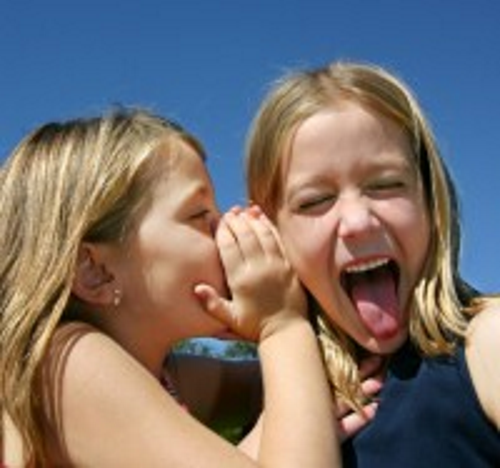
Verbal Learning Style
Children who are Word Smart think in words instead of pictures. They are pretty good spellers and like listening to stories. They express themselves well and are usually good listeners and recall spoken information. Language fascinates them, and they enjoy learning new words and exploring ways to creatively use language, as in poetry. They may enjoy learning new languages, memorizing tongue twisters, and playing word games.
How They Learn: They prefer activities that are based on language reasoning rather than abstract visual information. Math word problems are more appealing to verbal-linguistic learners than solving equations. They usually enjoy written projects, speech and drama classes, debate, and language classes.
5. Number Smart – Logical Intelligence
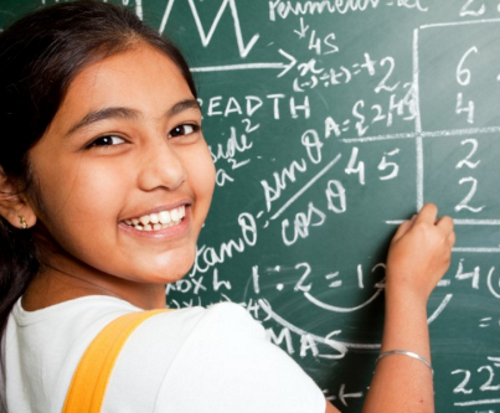
Logical Learning Style
Children who are Number Smart are able to do things with data. They see patterns and relationships. They are problem solvers. They like to play strategy games and solve mathematical problems. They are our future Albert Einsteins.
How They Learn: Teachers can strengthen this intelligence by encouraging the use of computer programming languages, critical-thinking activities, linear outlining, numbers, symbols, and abstract concepts.
6. People Smart – Social Intelligence

Social Learning Style
Children who are People Smart have a strong ability to relate to and understand others. They’re able to see things from other perspectives and have are able to sense feelings, intentions, and motivations. People Smart (Intrapersonal Learning Style). They like to be with others and enjoy joining clubs and other organizations. They like playing games with others.
How They Learn: Children who are People Smart learn best when they have direct involvement with others in a project. They are stimulated by dialog.
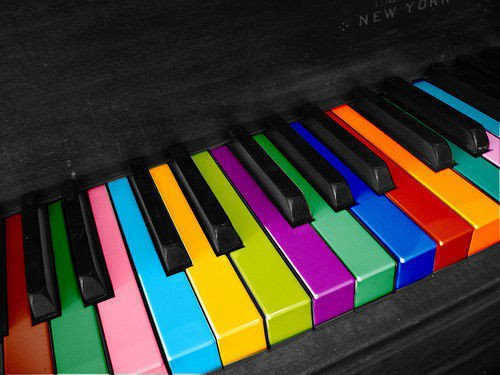
Conclusion
Multiple intelligence education ensures that every subject is taught through bespoke, tailor-made programs corresponding to each child’s dominant type of intelligence. A visual child, for example, would enjoy learning about the subject of music by playing piano on a colored keyboard while a verbal or logical child would probably do better on a standard piano. Thus, multiple intelligence education broadens the scope of teaching and learning, making education more efficient and more fun for both pupils and teachers alike.
Food for Thought …
Would the child that has learned to play the piano on a colored keyboard still be able to play a standard piano?
Which Type of Intelligence Runs Your Brain?
OVERVIEW PUBLICATIONS TEACHING ANIMAL RIGHTS BLOG ABOUT CONTACT